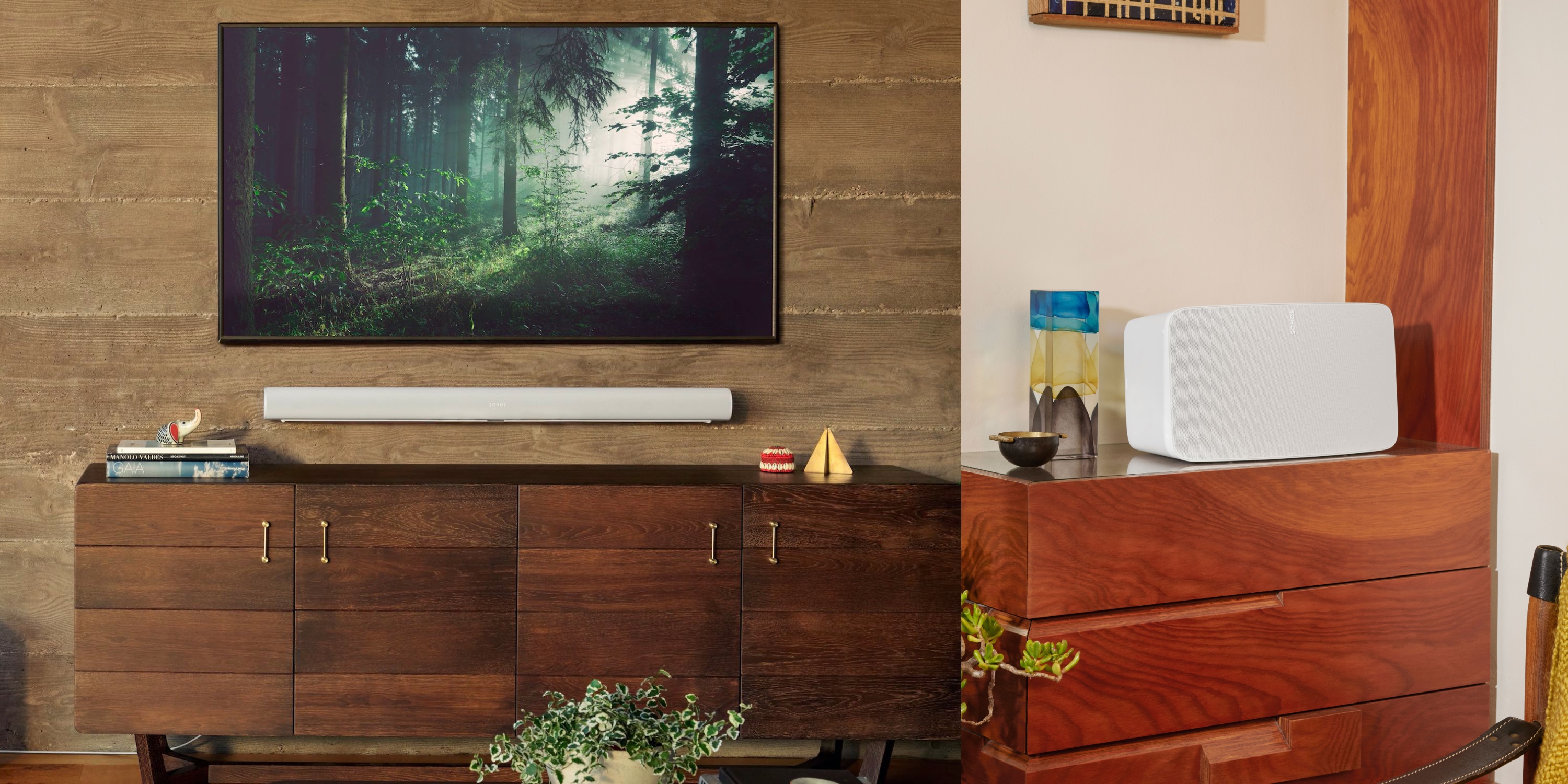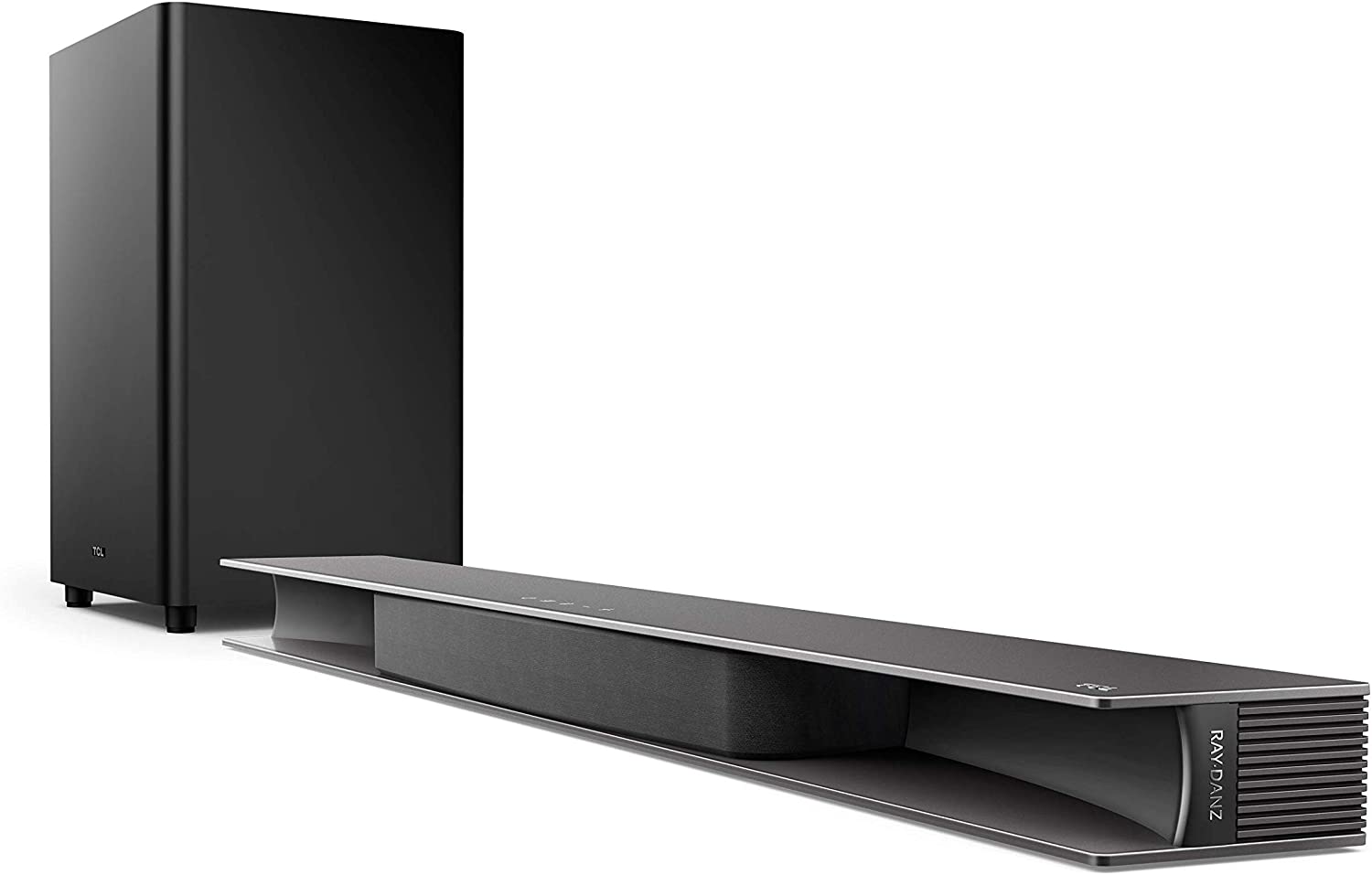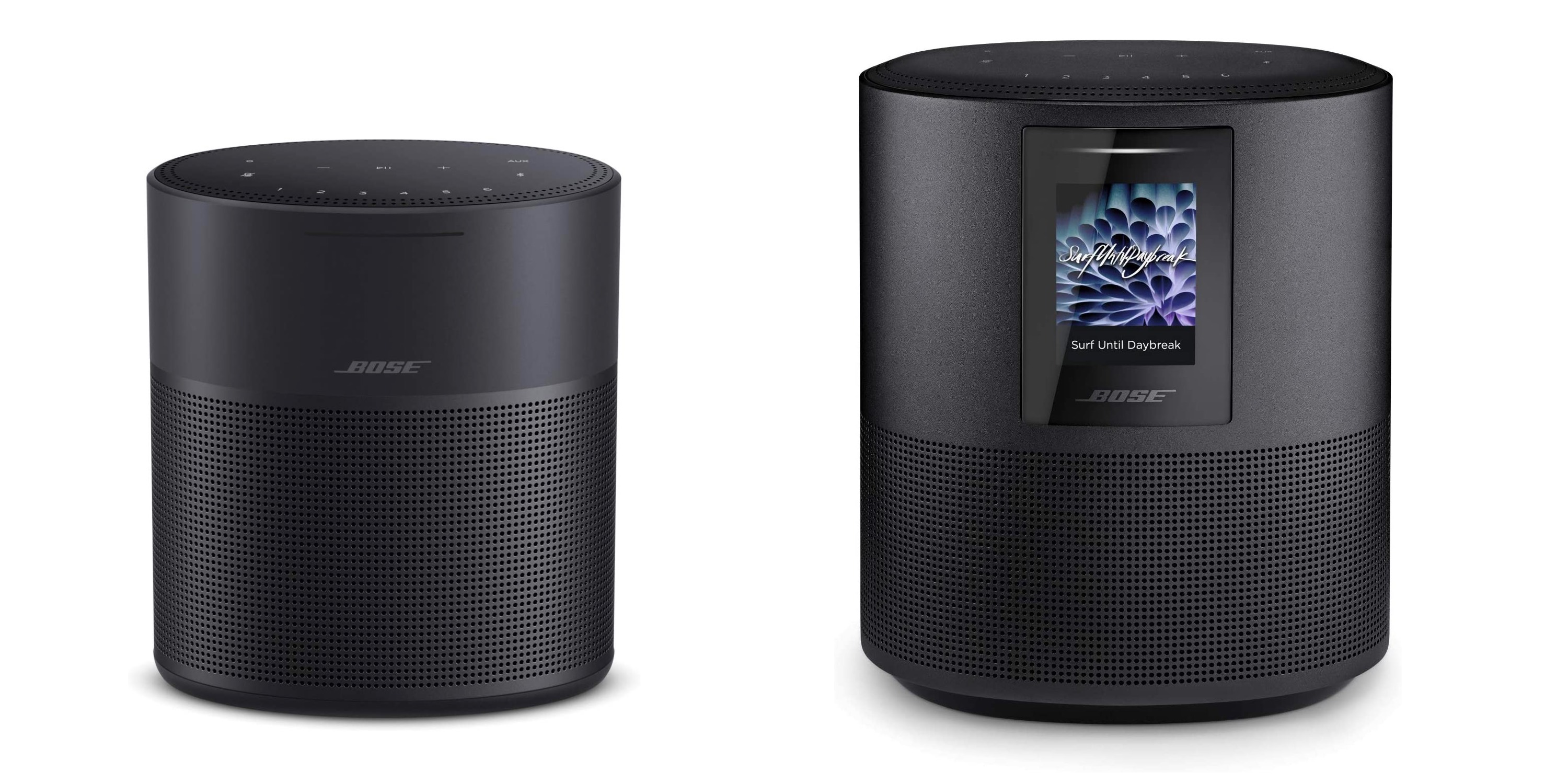In a surprising move, Apple discontinued the original HomePod without announcing a replacement. While HomePod mini lives on and does do some things even better than its predecessor like smart home connectivity with Thread, it doesn’t offer the same audio experience. Let’s look at 5+ of the best HomePod alternatives now that HomePod has moved on.
HomePod mini is the product Apple is hoping consumers will shift to with the original HomePod going away. However, two of the big missing pieces will be richer/louder sound and Dolby Atmos support that the larger HomePod has and the mini does not.
Even though you can pair two HomePod minis for stereo audio and to better fill larger spaces, many will want to look elsewhere for a quality mid-size speaker or home theater speaker(s) to fill the gap left by the discontinued HomePod.
Keep in mind, no other speaker on the market besides HomePod/HomePod mini comes with native Siri voice control built-in, so the next best thing is AirPlay 2 on third-party speakers which brings multi-room and Siri support via your iOS and other Apple devices.
Best HomePod alternatives
Sonos
Sonos offers a range of great alternatives to HomePod. One of the nice things with such a diverse lineup is you’ve got options that compete with and cost less than HomePod at $179 going up to $799 that outperform it.
All of these Sonos speakers feature AirPlay 2 support, so you can enjoy multi-room audio and Siri functionality that works along with HomePod mini, Apple TV, or any other AirPlay speakers. We’ve highlighted several Sonos HomePod alternatives below since the company makes some of the most consistently highly-rated HiFi speakers in the sub-$1,000 range.
Sonos One
This is Sonos’ entry-level and smallest speaker for home. It’s a great all-around speaker and two can be paired in a stereo setup.
The size of the One/One SL is a bit smaller than HomePod at 6.36 x 4.69 x 4.69-inches (161.45 x 119.7 x 119.7 mm) and overall you’re not getting quite as much volume output and low-end as HomePod, but it’s still a phenomenal speaker for the price. I’ve used a Sonos One alongside HomePod (and Sonos Move) for several years and have been really happy with it.
Sonos One with AirPlay 2 and built-in mic for Alexa/Google Assistant sells for $199. But if you don’t need the mics for Alexa/Assistant, you can opt for the Sonos One SL that features AirPlay 2 at $179. That means you can get two of these for just a bit more than the cost of one HomePod.
In addition to using them as standalone speakers or in a stereo pair, Sonos One and One SL can be used as the rear speakers in a Sonos home theater setup.
Here’s a look at Sonos One on the left and the larger, portable Sonos Move on the right.
Sonos Move
This option runs more expensive than HomePod, but you’re getting a portable speaker that works great inside and outside. It comes with AirPlay 2, 11-hour battery life, IP56 dust and water resistance, and more.
In my use, I would rate the volume output and bass a bit lower than HomePod but that makes sense as you’ve got the same speaker setup as the Sonos One in the Move with one tweeter and one mid-woofer. But you’re still getting room-filling sound with the Sonos Move and niceties like the auto Trueplay equalizer feature as well as WiFi and Bluetooth built-in.
At a premium over the $299 HomePod, Sonos Move sells for $399.
Sonos Five and Arc
These bonus options go beyond what you’re getting with a single HomePod (in both audio and price) but if you want bigger sound, or in the case of the Sonos Arc, Dolby Atmos support these are two more great option with AirPlay 2.
Sonos Five features what the company calls “studio quality” high-fidelity audio. It features three high-excursion mid-woofers and three tweeters. It can be placed horizontally or vertically depending on your setup and like the other Sonos speakers can be used alone or in a pair.
Along with AirPlay 2, it also includes an aux input for flexibility and the auto Trueplay equalizer like Sonos Move. Most users will find it takes two HomePods to match what the Sonos Five offers.

Sonos Arc is the company’s latest soundbar with a sharp design and premium “cinematic sound.” It’s certainly a jump up in price at $799, but some might feel this could take the place of two HomePods and you’re getting more flexibility for home theater setups.
The Sonos Arc does require a newer TV with HDMI ARC/eARC and offers Dolby Atmos support along with AirPlay 2, Ethernet, built-in mics for Google Assistant/Alexa, and more.
Sonos Arc features 8 high-excursion elliptical mid-woofers and three silk-dome tweeters. Another benefit here is you can expand your home theater setup immediately or over time with the Sonos sub and Sonos One speakers.
If losing Dolby Atmos isn’t a dealbreaker, the smaller Sonos Beam soundbar comes with AirPlay 2 and half the price of the Arc at $399.
TCL Alto

There are a lot of budget home theater soundbars on the market, but this may be the most compelling. At $250, the TCL Alto 9+ offers a 3.1 Dolby Atmos, AirPlay 2 setup.
The TCL Alto 9+ won’t match the Sonos Arc’s quality and output, but if you’re okay with the unique design, this soundbar with included wireless sub would be a great HomePod alternative for price-conscious home theater setups.
The TCL Alto 9+ has an average rating of 4.4/5 stars from over 1,400 buyers on Amazon.
Bose 300/500

Bose has a couple of interesting HomePod alternatives with the 300 and 500 home speakers and both include AirPlay 2.
The Bose Home Speaker 300 comes in $100 under HomePod at $199 with 360-degree audio. It’s about the same size as HomePod and features an aux input along with WiFi and Bluetooth connectivity. It comes with mics for Alexa/Google Assistant.
But big picture, Sonos One/One SL usually gets better ratings than the Bose Home 300.
The Bose Home 500 is a bit larger than HomePod (sits between the Sonos One and Sonos Five). It offers stereo audio, AirPlay 2, and the addition of a small screen. Like the Bose Home 300, the 500 has an aux input and mics for Alexa/Assistant commands.
An in-depth review from DXOMARK found the Bose Home 500 to perform well with the midrange sounding “natural” and treble “clear” but found bass got distorted at louder volumes. It also said the sound field felt “narrow.”
But if you value aux inputs and are partial to Bose, these might be a good fit.
Amazon Echo Studio

Ok, this one we’re thinking a touch outside the Apple walled garden but there’s still value here for Apple users and/or specific setups.
The $199 Echo Studio offers an impressive speaker for its price point with some overall great features and a few caveats.
It’s got a dedicated subwoofer, three mid-range speakers, and a downward-firing tweeter. You’re also getting Apple Music integration that offers voice control – albeit via Alexa. But you can set Apple Music along with almost any other major streaming service as your default.
But the first trade-off here is no AirPlay 2 support, so multi-room audio isn’t great for those deep in the Apple ecosystem.
So what scenario does Echo Studio make sense? If you’re looking for a HomePod alternative for a home theater setup or spaces where you want big sound and don’t mind skipping AirPlay support, this is worth considering with Dolby Atmos + the option of buying it bundled with the 100W Echo Sub at $330.
Two more caveats, for Dolby Atmos support you need to use the Echo Studio with a Fire TV Cube, Fire TV Stick 4K, or 3rd gen Fire TV Stick (not compatible with Fire TV built into TVs). And you’ll have to be alright with a less sleek design compared to HomePod or Sonos.
Best HomePod alternatives wrap-up
While a small group of users might be comfortable picking up an original HomePod while stock lasts, spending $299 on a discontinued smart speaker certainly won’t be for everyone.
I think Sonos makes some of the most compelling HomePod alternatives with AirPlay 2, proven quality audio, Dolby Atmos option with Arc, and more. But if you’re not sure on Sonos, hopefully the list above offered some helpful ideas on what will work best for you.
Alternately, if you haven’t used a HomePod mini yet and are still curious about how it stacks up against the original HomePod, check out our full comparison here.
FTC: We use income earning auto affiliate links. More.
